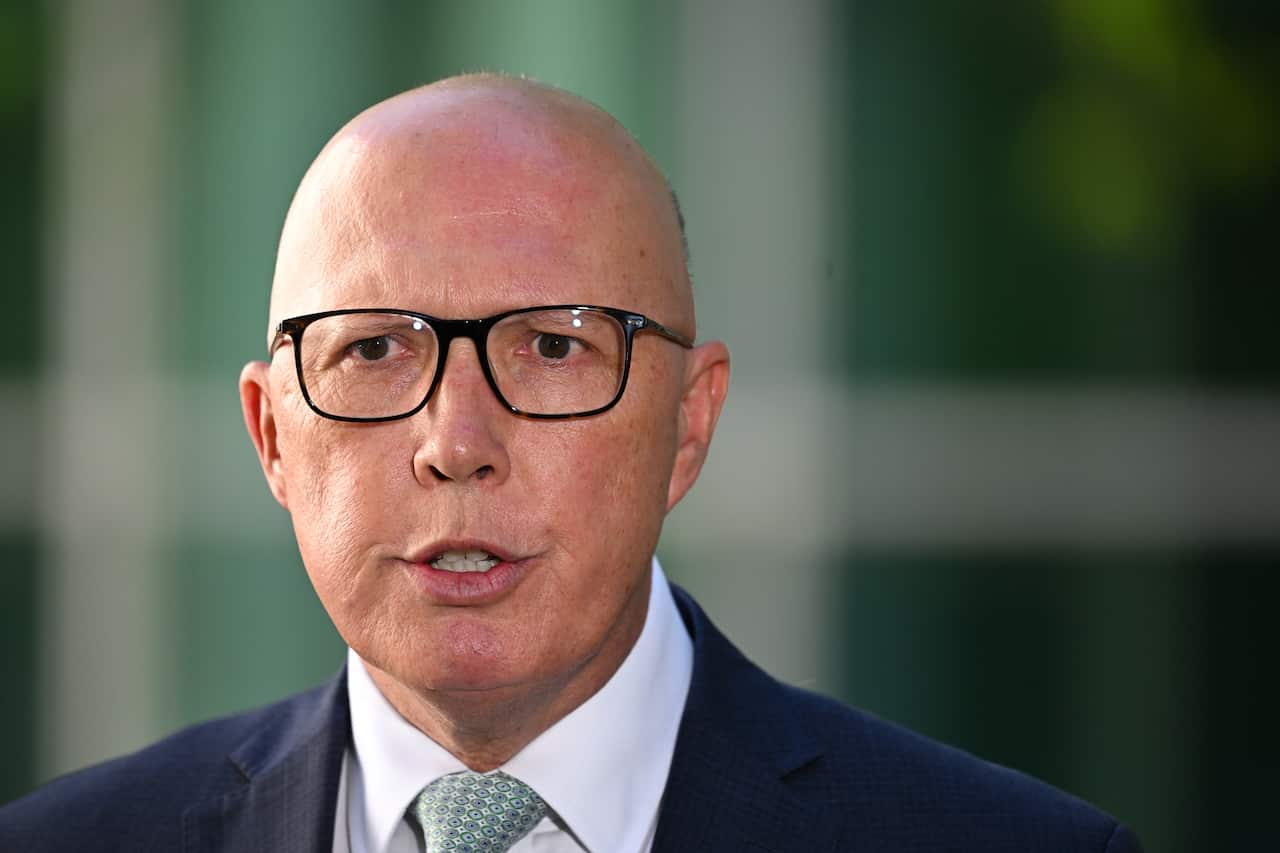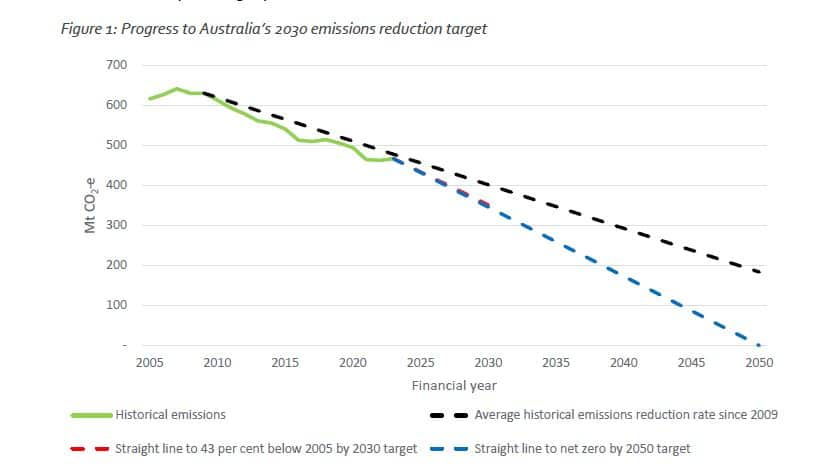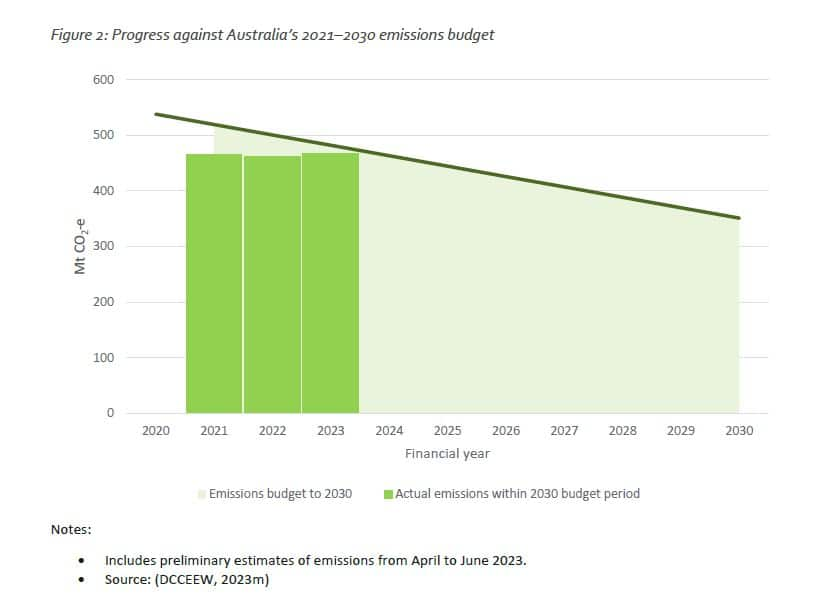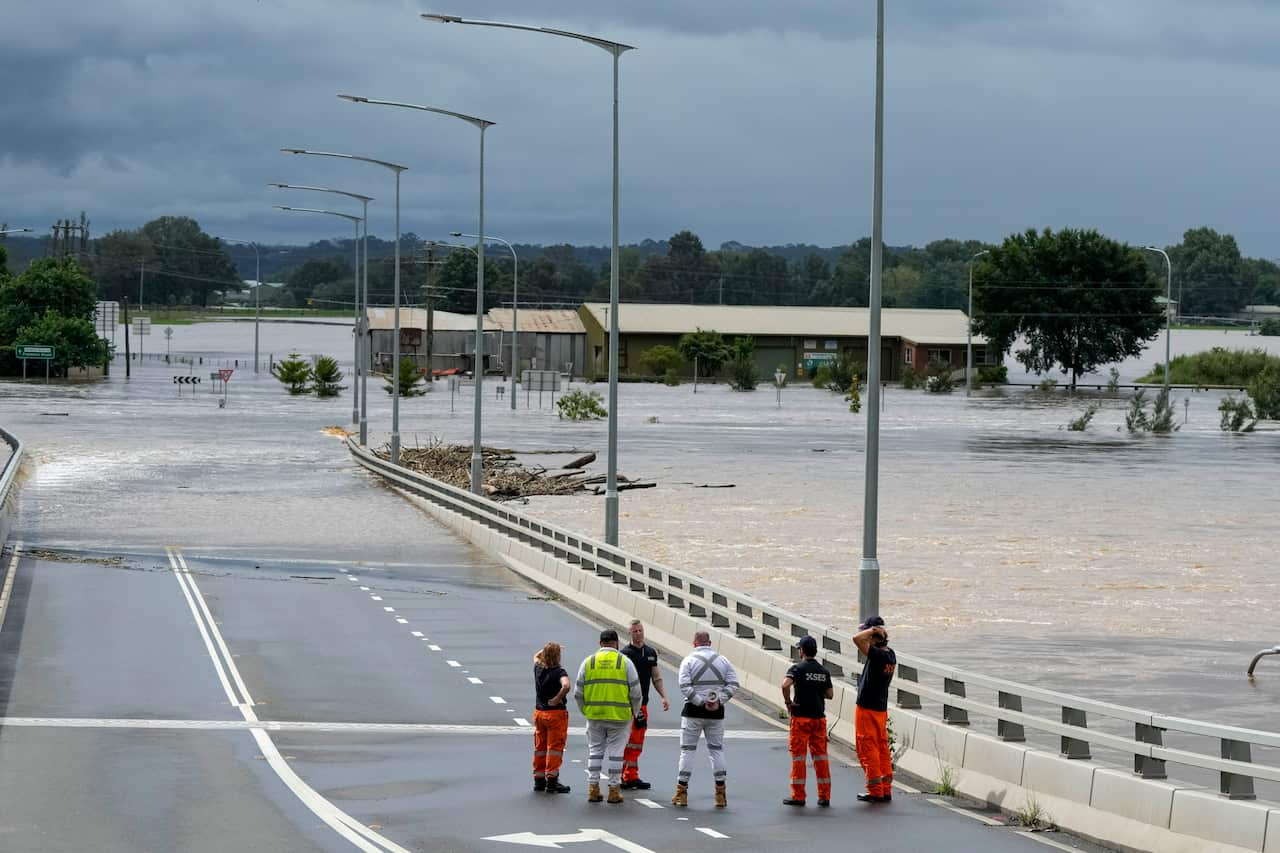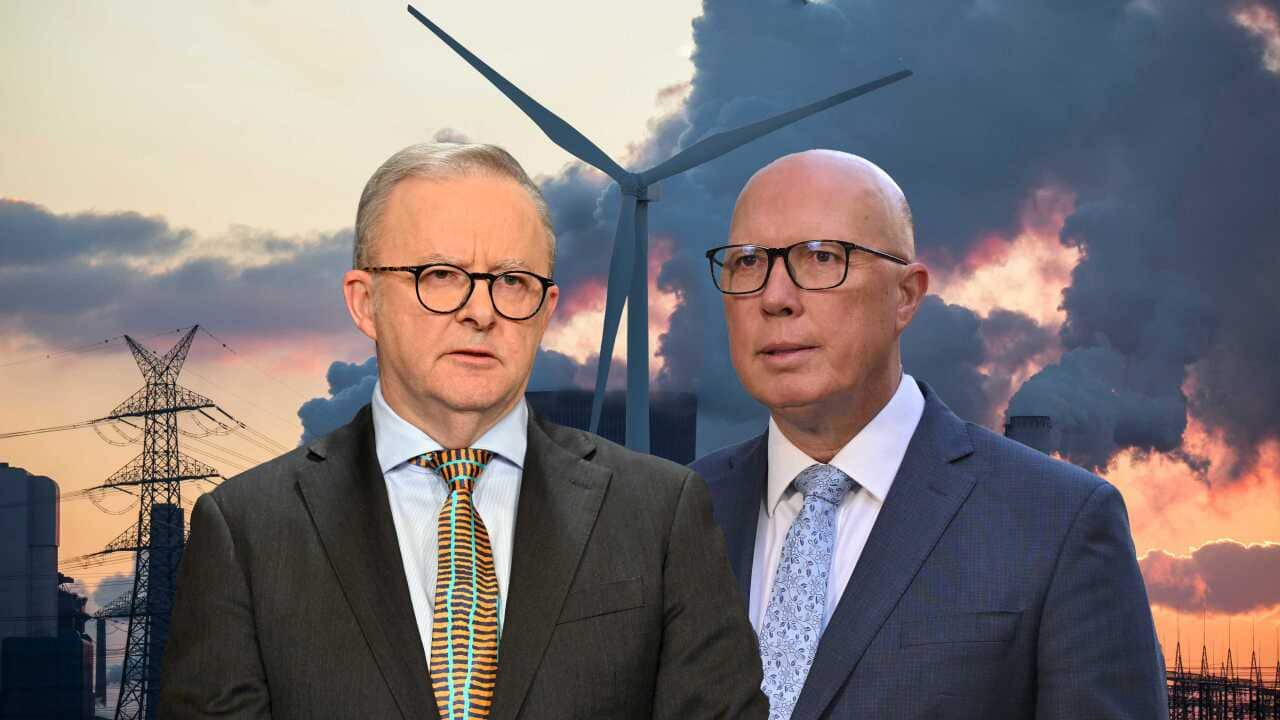Experts say “slow action” on climate change — including reliance on nuclear power to bring down carbon emissions in Australia — could mean global warming continues for longer.
Australia’s pathway to net zero carbon emissions is under scrutiny after the Coalition said it would walk away from the country’s 2030 target.
Opposition leader Peter Dutton told The Australian on the weekend he would oppose the government’s 2030 target to reduce carbon emissions by 43 per cent.
While the Coalition will keep Australia’s Paris Agreement target to reach net zero by 2050, Dutton said there was “no sense in signing up to [earlier] targets you don’t have any prospect of achieving”, and he would not do things like “destroy agriculture” to do so.
The Coalition has not yet revealed how it plans to bring emissions down to net zero. It also won’t announce its own 2030 target until after the next election, which is expected to be held by 27 September next year. The previous Morrison coalition government had a target of 26 to 28 per cent reduction.
The debate has raised questions about whether it’s necessary for Australia to meet the 2030 target, as part of its commitment to net zero by 2050.
Why are we talking about the Paris Agreement?
Australia set carbon emissions targets as part of its commitment to the , which is an international treaty that aims to keep global warming to well under 2C and preferably 1.5C.
The Albanese Government has legislated to reduce carbon emissions by 43 per cent below 2005 levels by 2030, and to reach net zero by 2050 as part of the agreement.
Bill Hare, the director of global think tank on climate change Climate Analytics, said keeping global warming to 1.5C would prevent the worst effects of climate change.
But in the wake of Dutton revealing the Coalition would not support the 43 per cent target, Nationals MPs Barnaby Joyce and Keith Pitt have already called for Australia to pull out of the Paris Agreement.
Opposition leader Peter Dutton says the Coalition won’t support Australia’s 2030 carbon emissions reduction target. Source: AAP / Lukas Coch
In meeting the Paris target, the Coalition says would be a major policy it will take to the next election, although little detail has yet been released on this. It also wants to ramp up domestic gas production.
The Coalition would also wind back the government’s , which sets tougher emissions standards for new cars being brought into Australia from December 2025.
Is Australia on track to achieve its 2030 targets?
Labor has dismissed suggestions it’s not on track to meet its 2030 target.
The latest Climate Change Authority report released in 2023, projected Australia’s emissions to be 42 per cent below 2005 levels in 2030. That’s only 1 per cent below the target of 43 per cent.
In addition to noting that Australia was not yet on track for the 2030 target, the report also found that, in the year to June 2023, preliminary estimates show emissions actually rose slightly.
Climate Change Minister Chris Bowen said in a statement that the projections showed the 43 per cent target was “ambitious but achievable”.
How Australia’s carbon emissions are tracking. Source: Climate Change Authority 2023 annual progress report Source: Supplied / Charis Chang
He said other actions were also making a significant difference to emissions. This included more renewables — encouraged through its Capacity Investment Scheme — and policies to improve the uptake of electric vehicles, as well as reform of the Safeguard Mechanism, which requires Australia’s highest greenhouse gas emitters to reduce their emissions.
Hare said he agreed the government was “relatively close” to meeting its target.
“The Opposition’s claim that it’s far from meeting its target are nonsense,” he told SBS News.
Mark Howden is the director of Australian National University’s Institute for Climate, Energy & Disaster Solutions.
He said Australia would probably not know whether its policies — such as the New Vehicle Efficiency Standard due to begin in January 2025 for the supply of more fuel-efficient cars — were effective until they ramped up further.
But he said that businesses facing an uncertain situation made it less likely they would invest in reducing emissions.
“It’s very well known that throwing uncertainty into the mix is a great way of stopping action.”
Could Australia still get to net zero by 2050 without meeting the 2030 target?
Howden said the 2030 target was an important part of the trajectory to get to net zero and limit global warming.
He said to keep global warming to a specific temperature, there was a limit to the amount of greenhouse gases that could be emitted. This is called the emissions budget.
If Australia did not bring its emissions down rapidly, and instead kept emitting greenhouse gases at current levels, he said “we completely blow our greenhouse gas emissions budget”.
If all countries did this we could not keep temperatures to the 1.5 to 2C limits in the Paris Agreement.
This is one reason why it’s a risk to rely on nuclear energy, which could take 10 to 20 years to build in Australia, and would not start bringing down emissions in the electricity sector until closer to 2050.
As part of the Paris Agreement, Australia agreed to an “emissions budget” of 4,353 metric tons of carbon dioxide equivalent (Mt CO2-e) for the decade between 2021 and 2030.
“Australia will soon overshoot that trajectory unless emissions begin to decline rapidly,” the Climate Change Authority report noted.
As part of the Paris Agreement, Australia has also agreed to stay within an emissions budget. Source: Climate Change Authority Source: Supplied / Charis Chang
“We can’t keep on doing what we’re doing up to 2050 and have a greenhouse gas emissions budget that’s consistent with 2 degrees of warming, let alone 1.5 degrees,” Howden said.
“The cost and risk of doing that would be huge.”
Howden said the economics was increasingly clear that inaction on climate change was far more expensive than action.
We can’t keep on doing what we’re doing up to 2050 and have a greenhouse gas emissions budget that’s consistent with 2 degrees of warming, let alone 1.5 degrees.
Professor Mark Howden, Australian National University
Planet will warm for longer if you don’t reduce emissions rapidly
Hare agreed that the world needed to reduce emissions by 40-plus per cent in the next six years to keep warming to 1.5C, or it would face a longer period of hotter weather.
“If you don’t reduce emissions then you add more carbon dioxide to the atmosphere — that warms the planet for that much longer,” he said.
“The battle against climate change is actually a battle of rapid action. Slow action is not a solution at all.”
The battle against climate change is actually a battle of rapid action. Slow action is not a solution at all.
Bill Hare, Climate Analytics director
Hare said if the world followed the guidance of the Intergovernmental Panel on Climate Change (IPCC) and significantly reduced emissions by 2030, the rate of warming would quickly begin to slow after 2050.
“Warming would more or less stop,” he said.
Meeting climate targets is ‘in Australia’s economic interest’
Howden said rapid progress on reducing global greenhouse gas emissions was “very much in Australia’s interests” from an economic point of view, even without taking into consideration other human and biodiversity costs.
“There’s a range of economic analysis out now, which shows the worst thing we can do is dally,” he said.
Howden pointed to the financial costs of extreme events such as cyclones and floods, the cost of sea level rise that causes coastal erosion impacting homes, and costs of replacing road surfaces due to extreme heat days.
“We’re much better off if we take action on climate change right now.”
State emergency staff stand near the entrance to the flooded Windsor bridge on the outskirts of Sydney, on 3 March 2022. Source: AP, AAP / Rick Rycroft
Howden said if Australia were to drop its 2030 target, it would be like withdrawing from a race because there was a chance you might not win.
“What you do is you give it your best shot,” he said.
“The argument that because we may not make it, [therefore] we should step out from it, is an argument for failure.”
Crucial actions to ensure we meet our targets
It will be almost impossible for Australia to meet its targets without reducing emissions in the electricity sector, Howden said.
But these only make up around 30 per cent of emissions.
“We [also] need to focus on the other 70 per cent,” Howden said.
This includes transport and agriculture emissions, and emissions from other industries including coal and gas producers.
Hare agreed it was important the government met its target to transition the national electricity market to 82 per cent renewables by 2030.
He said Australia could also improve its vehicle fuel efficiency standards, and extend it to trucks, buses, and light commercial vehicles to encourage more electric vehicles.
Hare would also reform the Safeguard Mechanism so that it doesn’t allow companies to use offsets as he doesn’t think they work to reduce emissions.
He said the nuclear discussion was a waste of time and possibly a distraction because the Opposition was not doing much else to reduce emissions.
“I think it’s very much a red herring,” he said.
“At a political level we see governments around the world set targets for 2050 with absolutely no intention or policies to get there and the Opposition proposal here seems to fit into that category.
“The history in this country of fulfilling long-term promises is not good.”
